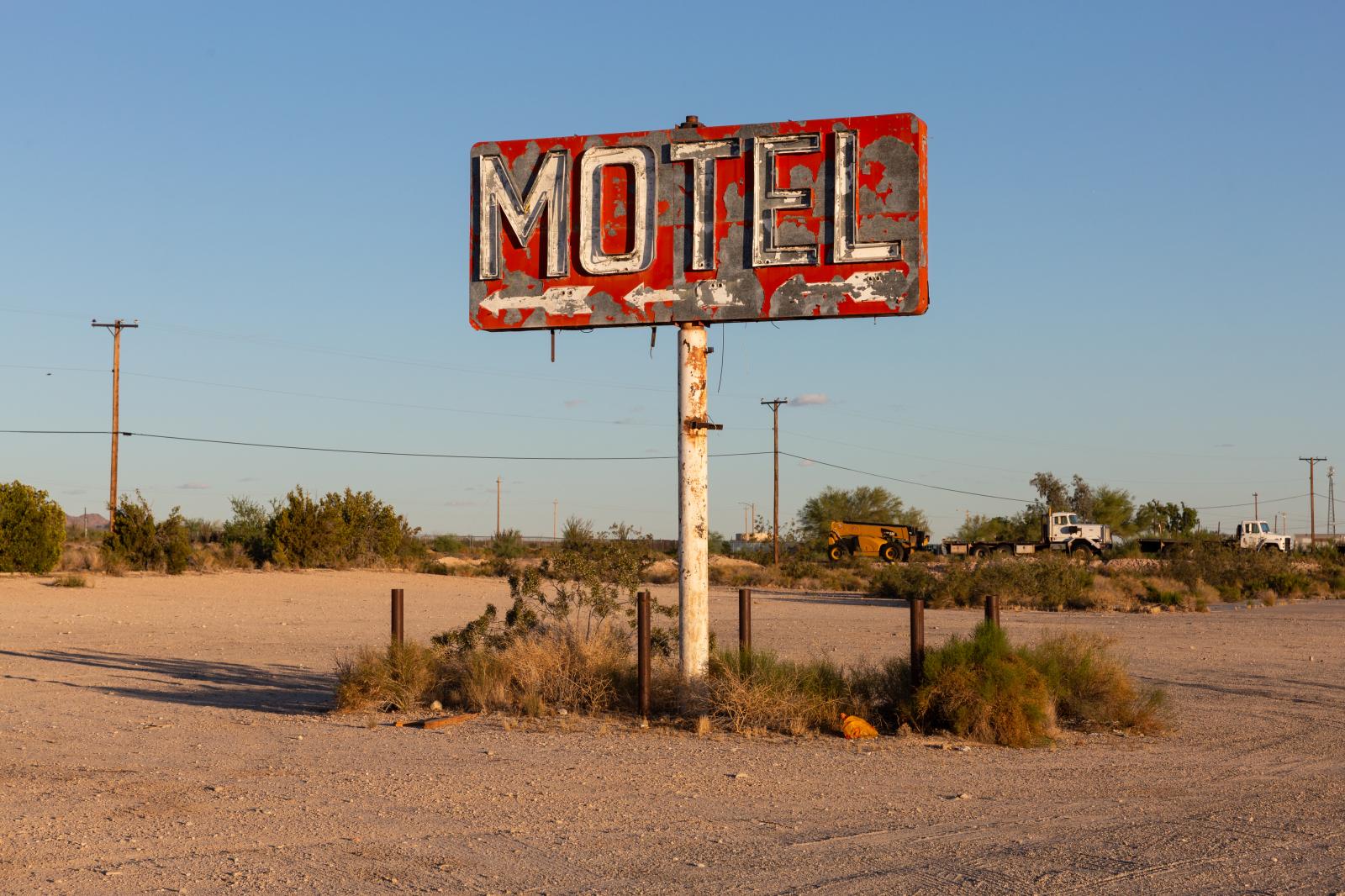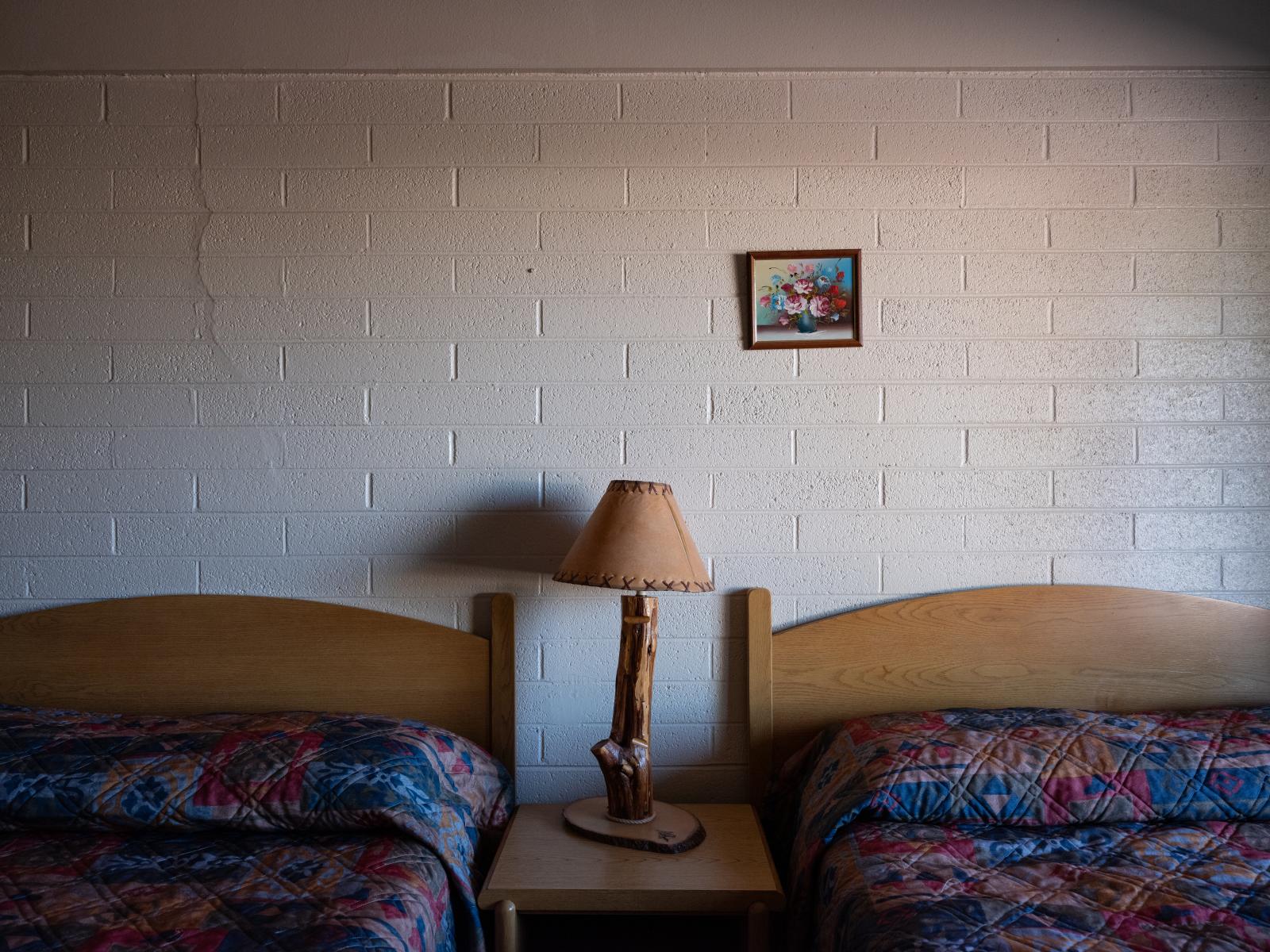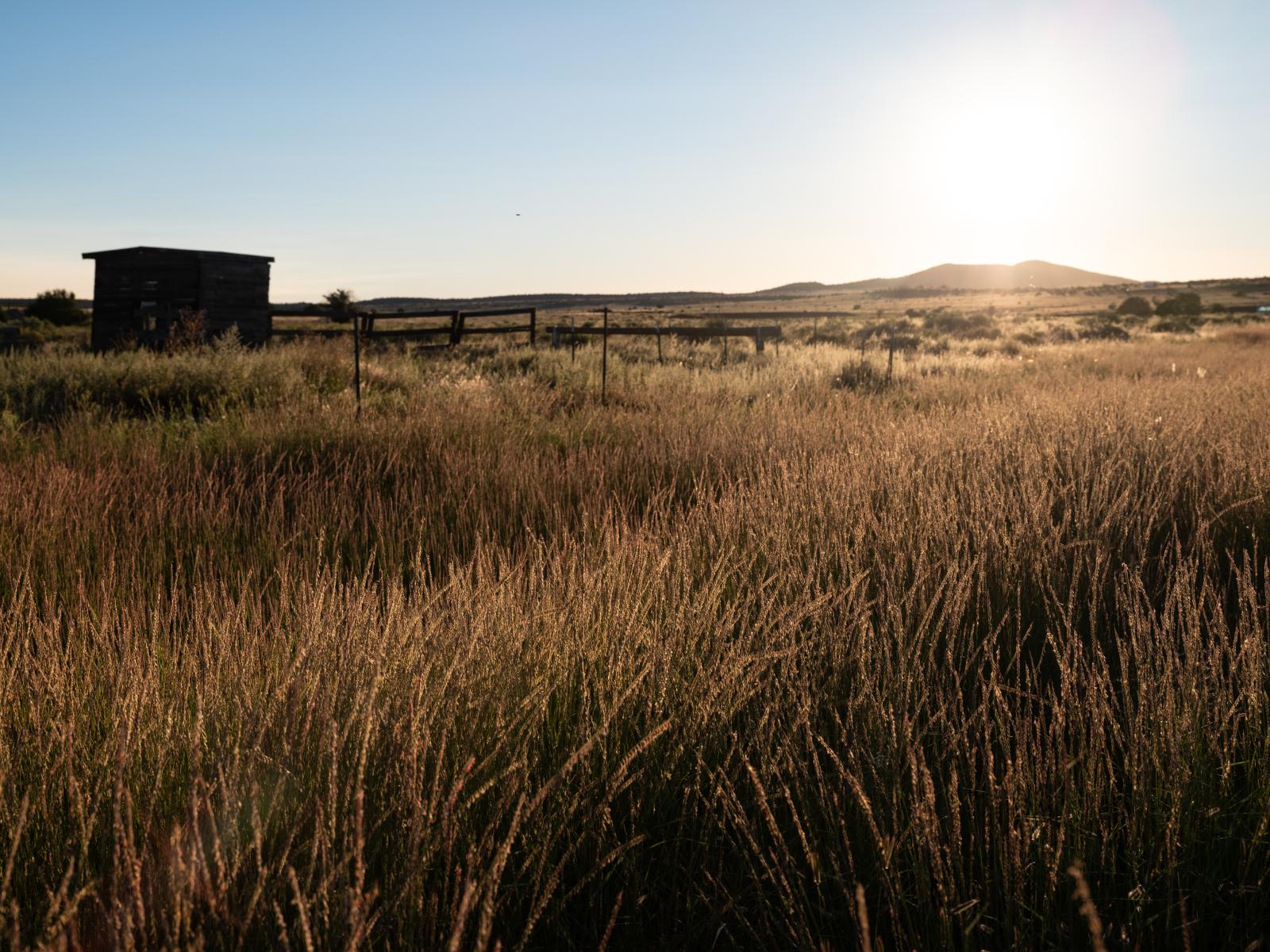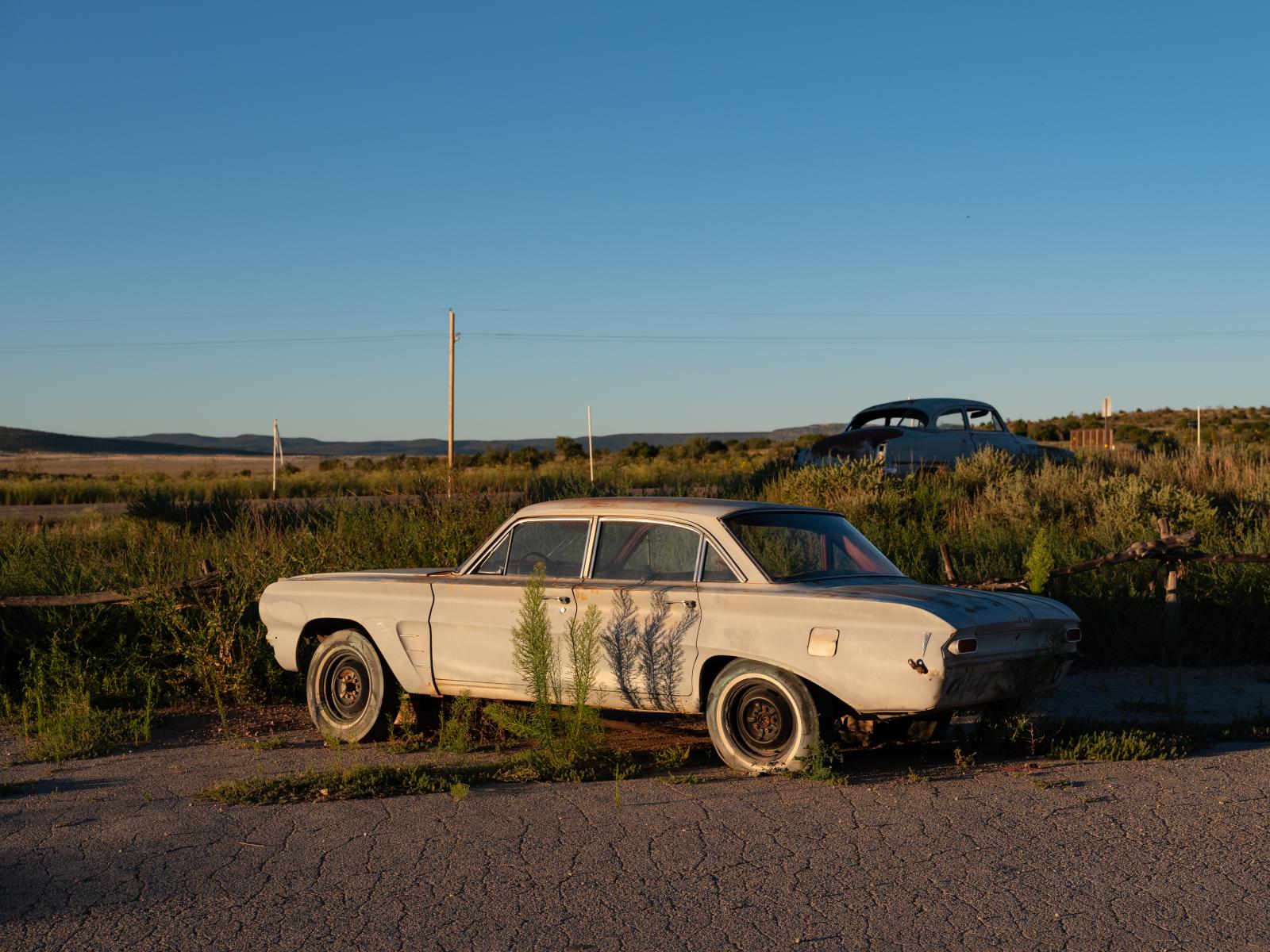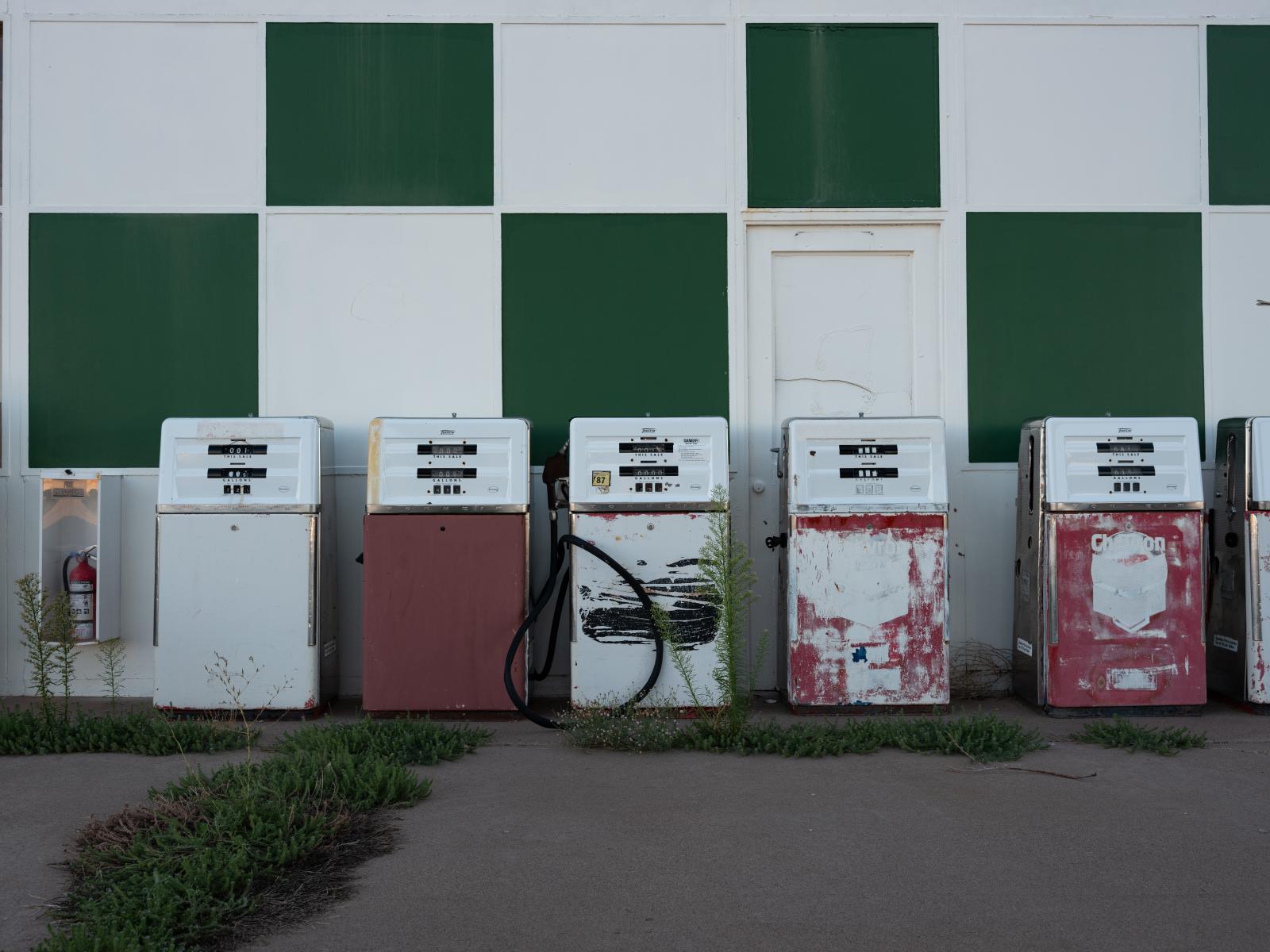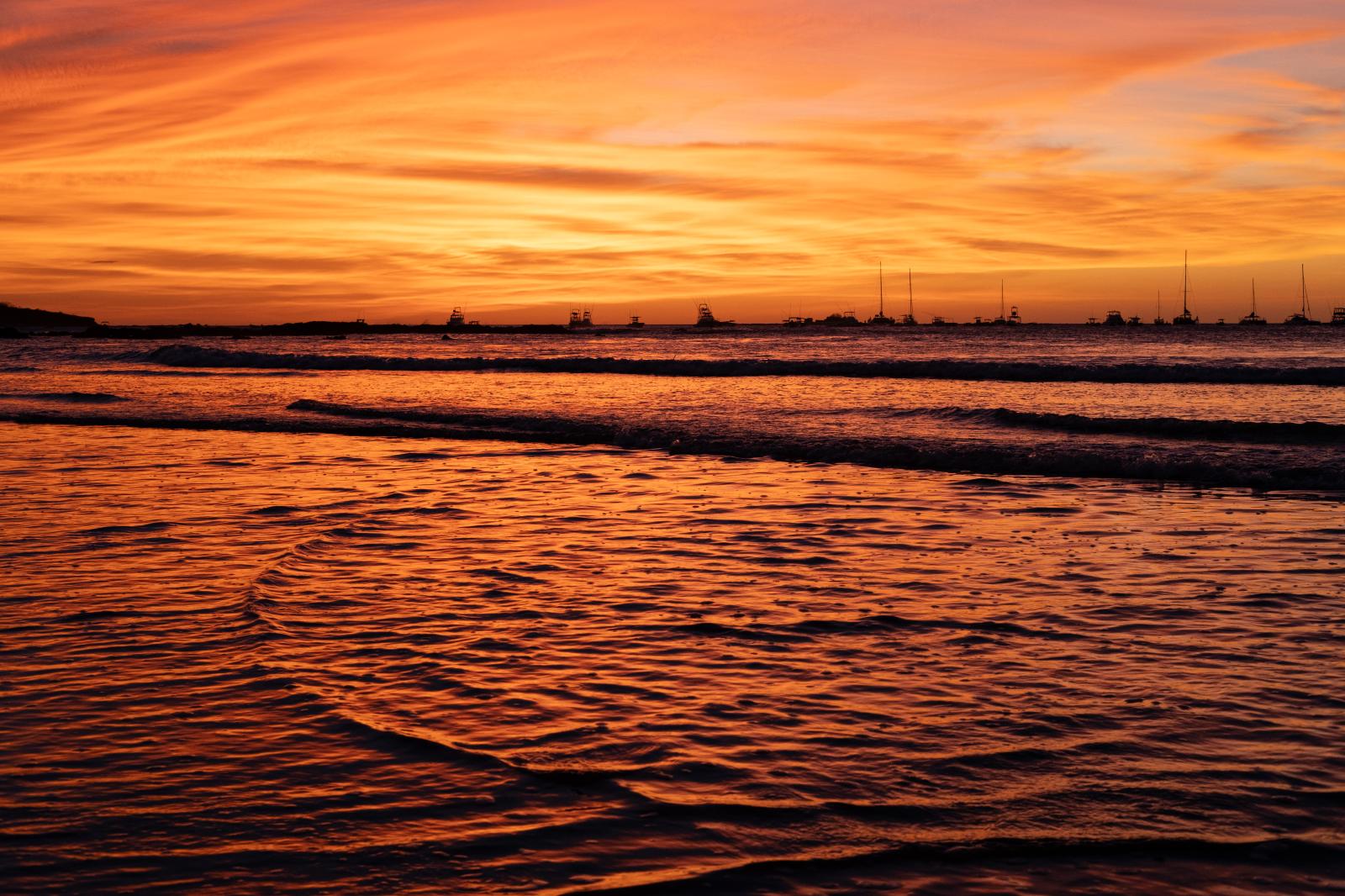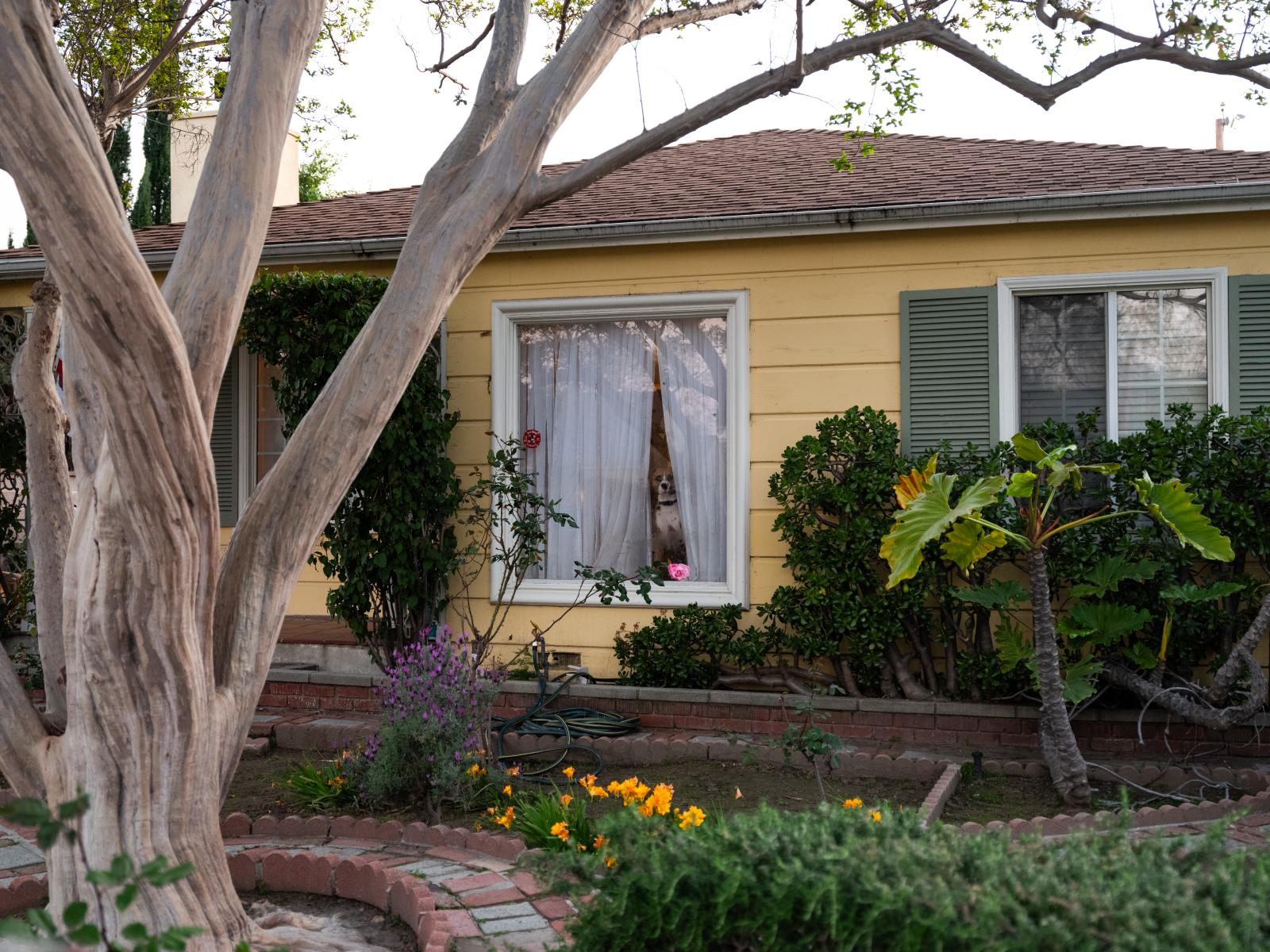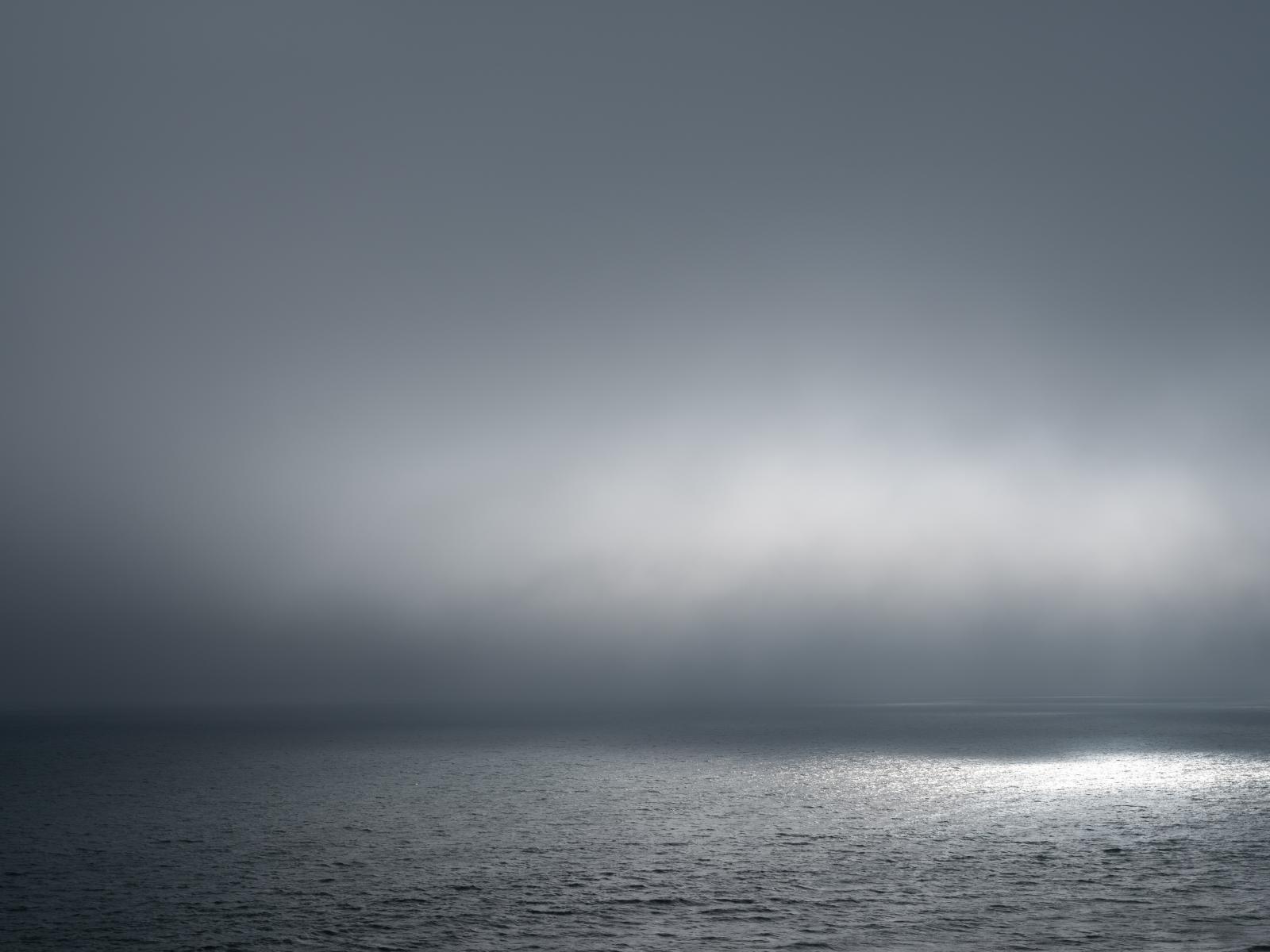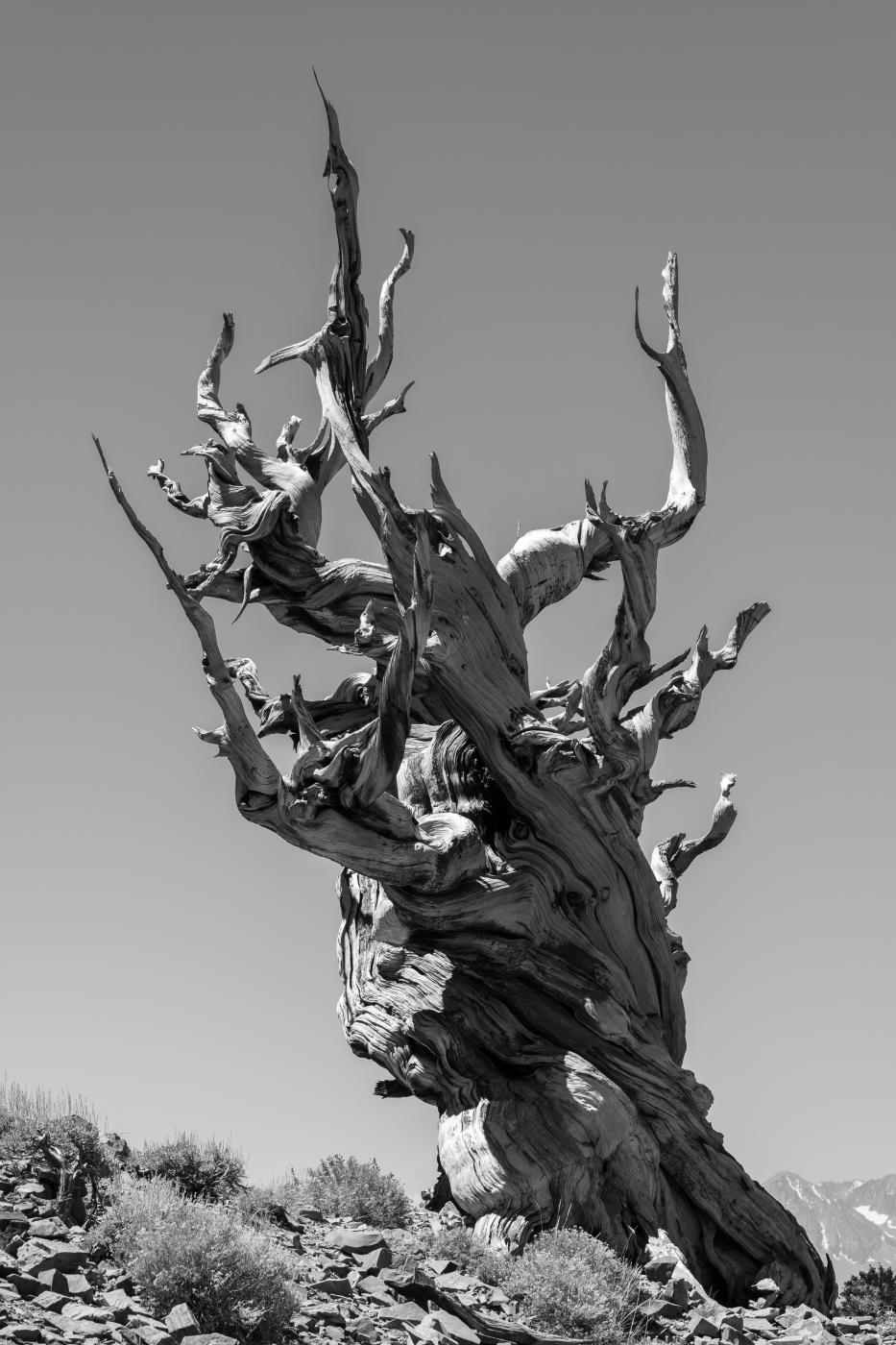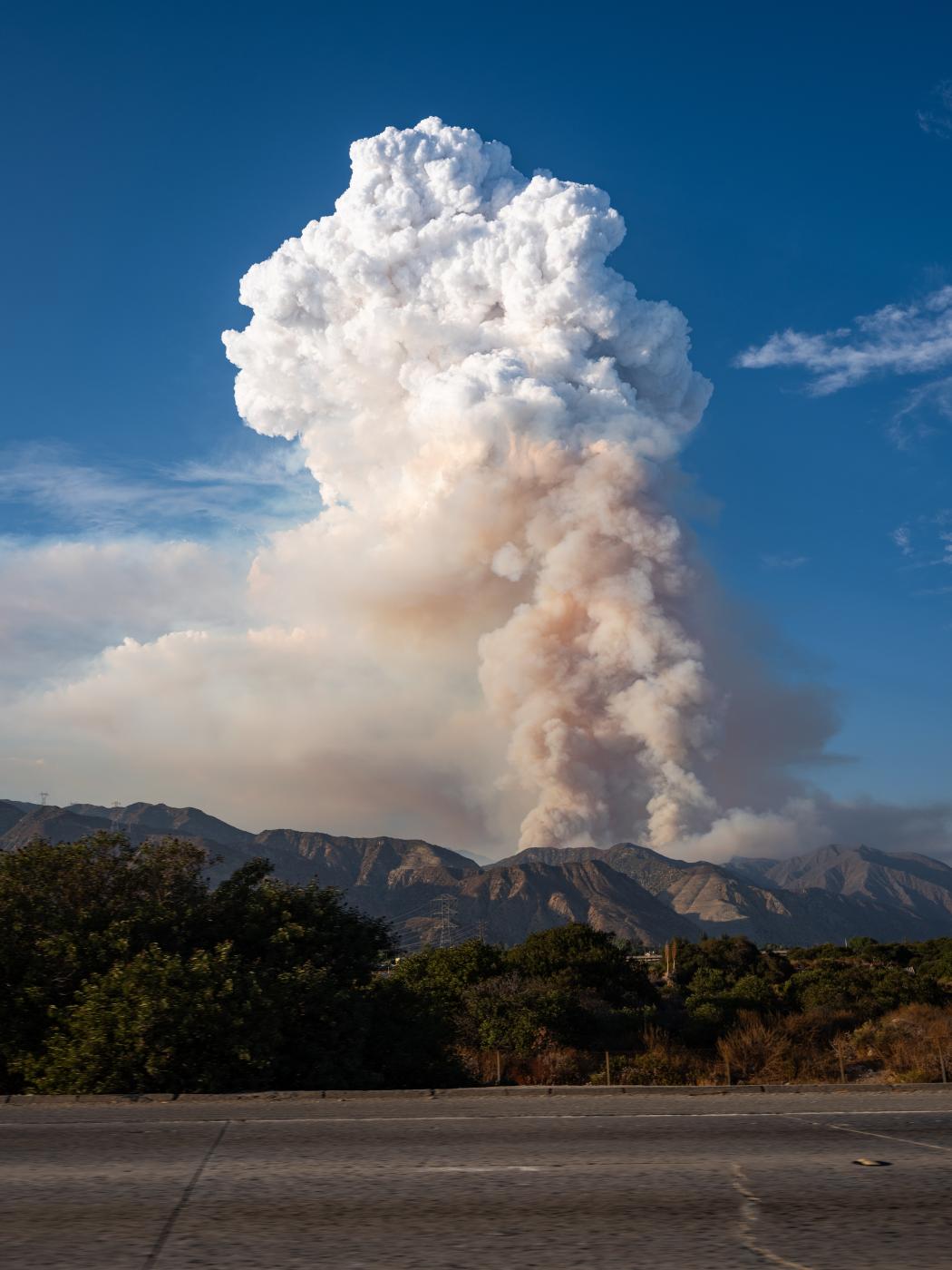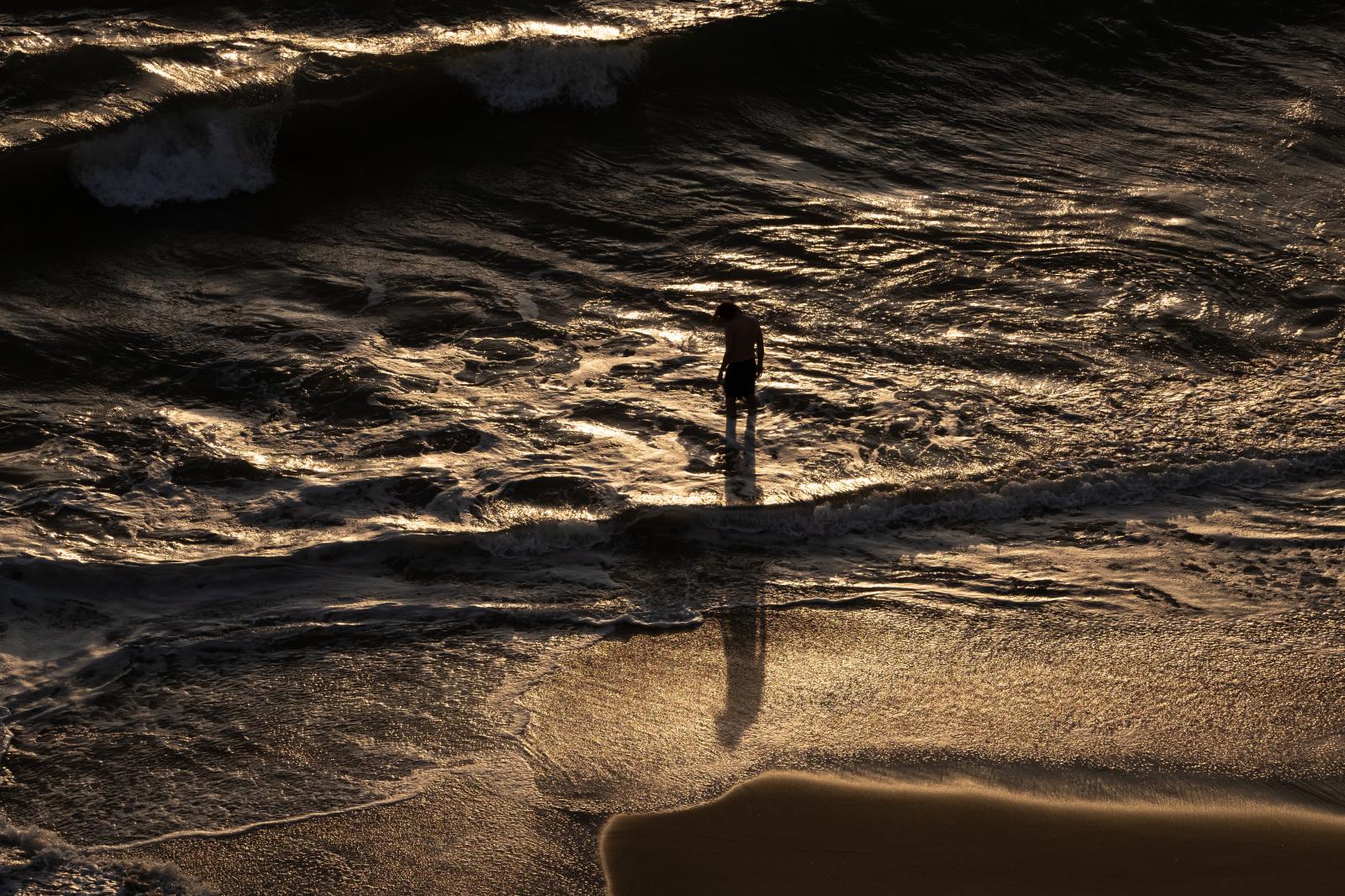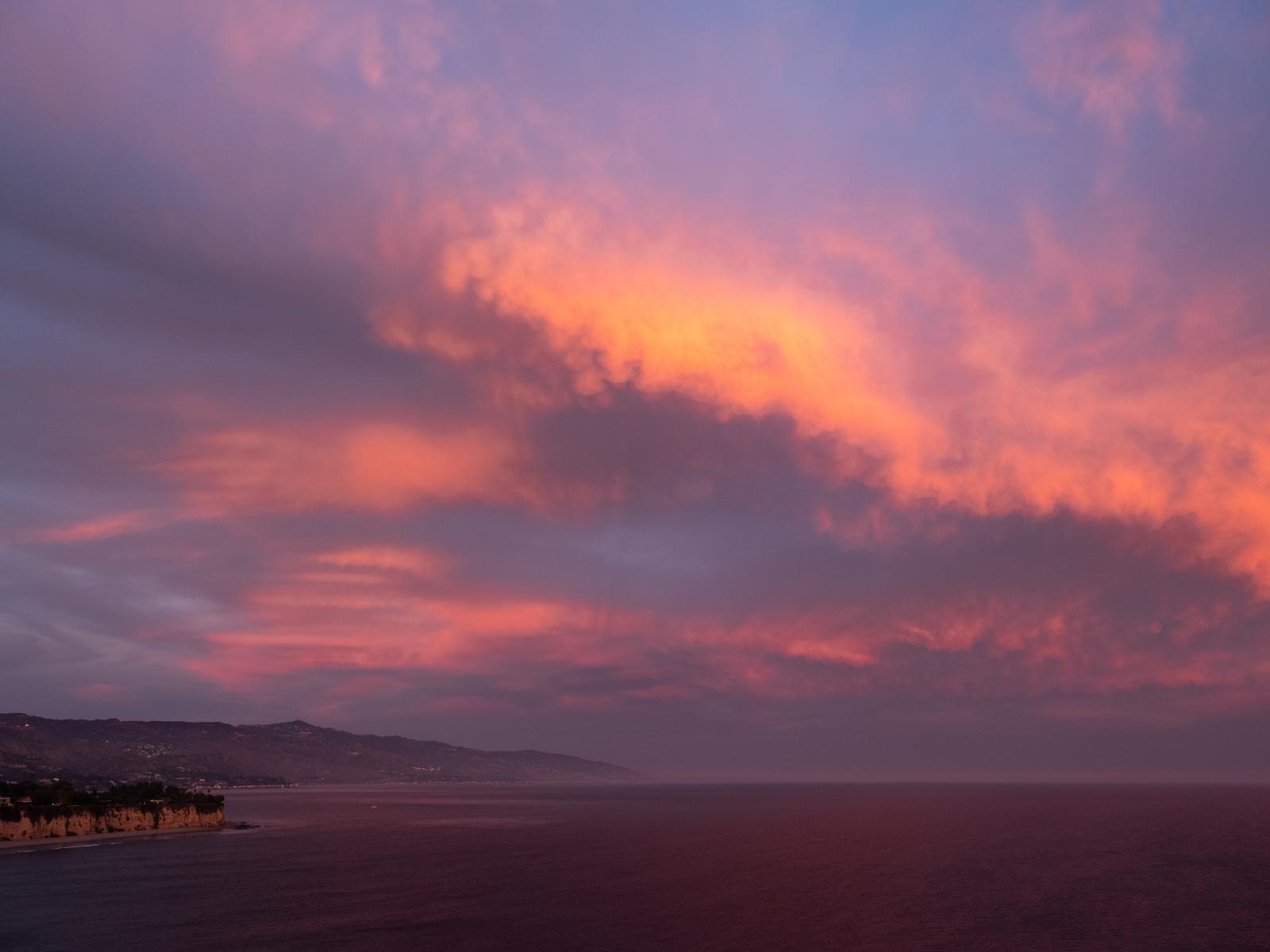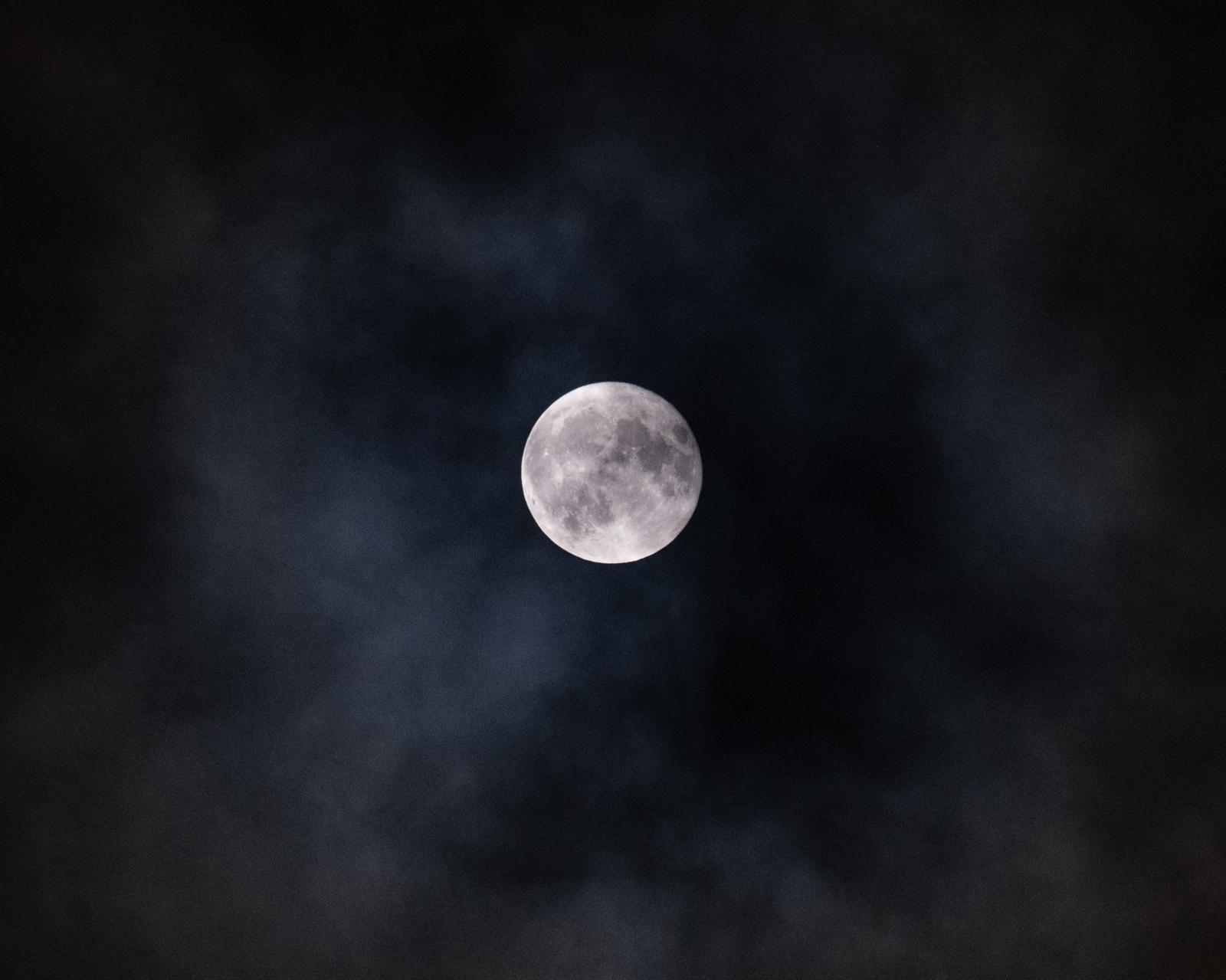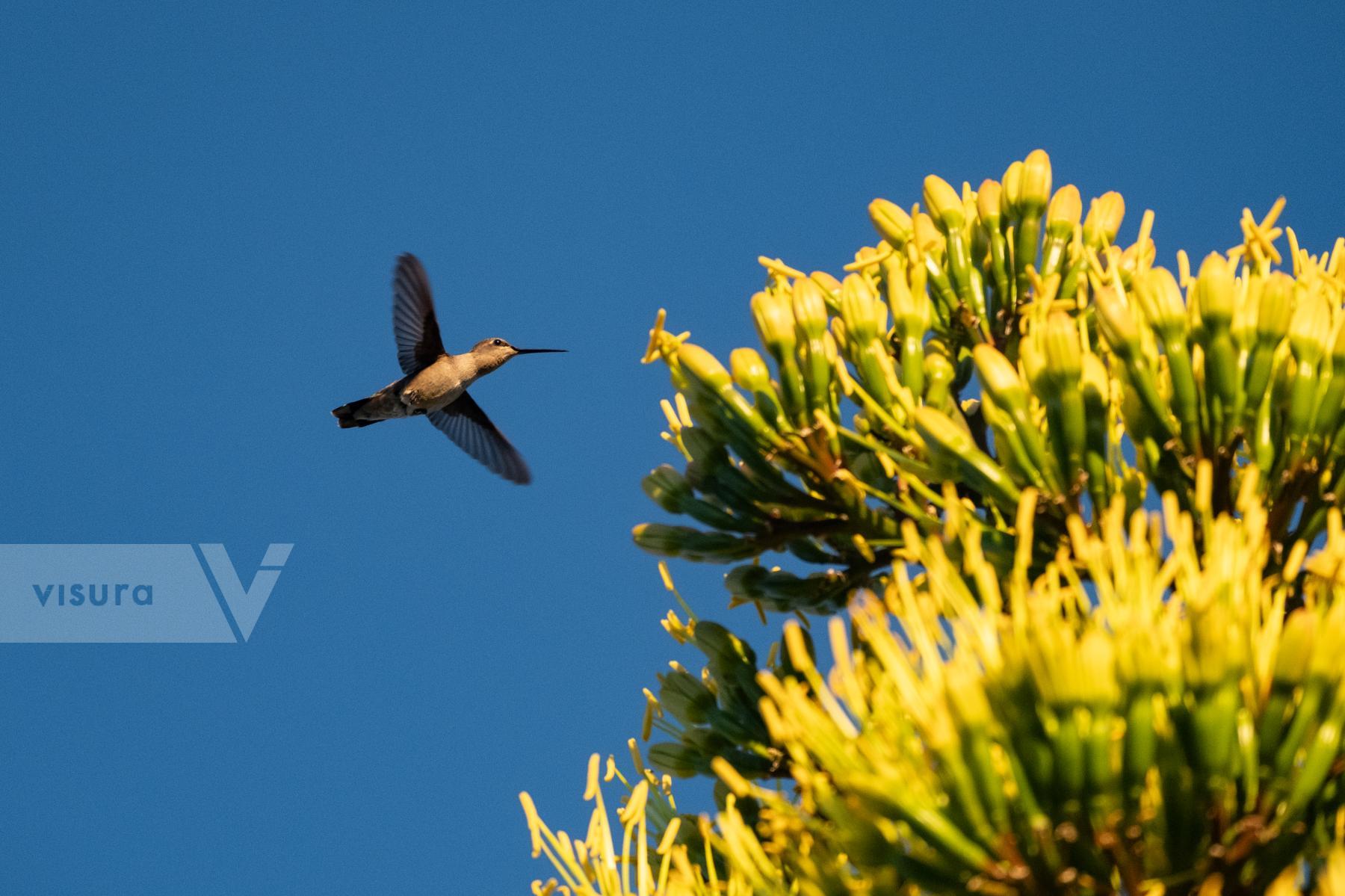
Hummingbirds visit blooming yucca plants at the Borderlands Wildlife Preserve in Patagonia, AZ on June 20, 2023.
Patagonia, part of the Sky Islands in southeast Arizona, has the highest biodiversity in North America, including 112 endangered, threatened, or sensitive species, but it is also rich in minerals like manganese. This area is the planned location of the South32 Hermosa mine, which was the first project approved by the Biden administration under the FAST-41 expedited regulatory process for minerals deemed "critical" to the expansion of green energy technology.

Carolyn Shafer, Board President of Patagonia Area Resource Alliance (PARA), points out locations on maps outside her home in Patagonia, AZ, on June 17, 2023.
PARA is a citizen watchdog group founded in 2011, which works to protect the Patagonia Mountains and Sonoita Creek Watershed from the effects of industrialized mining. The group’s most recent work focuses on the South32 Hermosa mine, the first mining project approved by the Biden administration under FAST-41 — a program designed to expedite regulatory approval processes — for minerals deemed "critical" to the expansion of green energy technology.

Harshaw Creek runs through Patagonia, Arizona, seen on June 17, 2023. The plan for the South32 Hermosa mine, recently approved by the Biden administration under the FAST-41 expedited regulatory process, would dewater the Patagonia Mountains, removing massive amounts of groundwater, treating it, and dumping it into the Harshaw Creek. It is estimated that this small creek would be receiving 6.6 million gallons per day, likely leading to flooding of the area, while the mountains would be dried out, damaging the delicate ecosystem of endangered and threatened species that live there.

Remediation efforts done by the US Forest Service to repair damage from previous mining projects is visible from Flux Canyon Road in Patagonia, AZ, on June 17, 2023.
Patagonia, part of the Sky Islands in southeast Arizona, has the highest biodiversity in North America, including 112 endangered, threatened, or sensitive species, but it is also rich in minerals like manganese. This area is the planned location of the South32 Hermosa mine, which was the first project approved by the Biden administration under the FAST-41 expedited regulatory process for minerals deemed "critical" to the expansion of green energy technology.

A sign in Carolyn Shafer’s home in Patagonia, Arizona, seen on June 17, 2023, encourages reforming the mining law of 1872, which is used as the basis for most mining projects today in the US. It was designed for the mining done at the time and does not take into account the extensive destruction that comes with modern mining techniques.
Shafer is the Board President of Patagonia Area Resource Alliance (PARA), a citizen watchdog group founded in 2011, which works to protect the Patagonia Mountains and Sonoita Creek Watershed from the effects of industrialized mining.

“This is my version of tree-hugging,” Carolyn Shafer, Board President of Patagonia Area Resource Alliance (PARA), said in Humboldt Canyon in Patagonia, Arizona on June 17, 2023. “My favorite canyon is whichever one I’m in,” but Humboldt Canyon holds a special place in her heart and spirit. “For me, this meets the classic definition of a cathedral,” she said, speaking of her spiritual connection to the canyon, which is at risk of destruction through the South32 Hermosa mining project.
PARA is a citizen watchdog group founded in 2011, which works to protect the Patagonia Mountains and Sonoita Creek Watershed from the effects of industrialized mining. The group’s most recent work focuses on the South32 Hermosa mine, the first mining project approved by the Biden administration under FAST-41 — a program designed to expedite regulatory approval processes — for minerals deemed "critical" to the expansion of green energy technology.
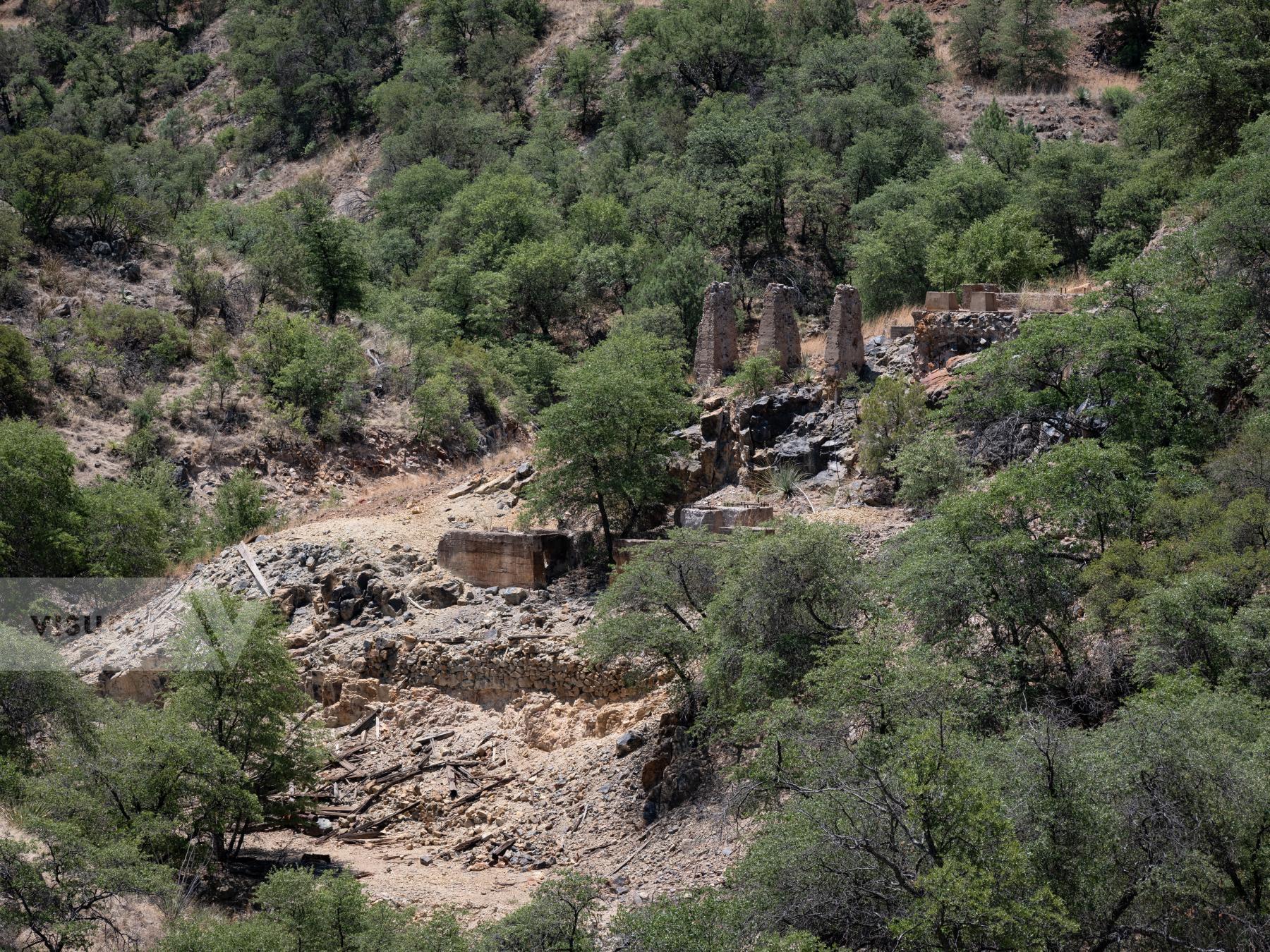
Remnants of the historic World’s Fair mine are visible from Flux Canyon Road in the Patagonia Mountains, seen on June 17, 2023.
Patagonia, part of the Sky Islands in southeast Arizona, has the highest biodiversity in North America, including 112 endangered, threatened, or sensitive species, but it is also rich in minerals like manganese. This area is the planned location of the South32 Hermosa mine, which was the first project approved by the Biden administration under the FAST-41 expedited regulatory process for minerals deemed "critical" to the expansion of green energy technology.

A dewatering and water treatment facility at South32 Hermosa mining project along Harshaw Creek in Patagonia, Arizona, seen on June 17, 2023.
The plan for the South32 Hermosa mine, recently approved by the Biden administration under the FAST-41 expedited regulatory process, would dewater the Patagonia Mountains, removing massive amounts of groundwater, treating it, and dumping it into the Harshaw Creek. It is estimated that this small creek would be receiving 6.6 million gallons per day, likely leading to flooding of the area, while the mountains would be dried out, damaging the delicate ecosystem of endangered and threatened species that live there.
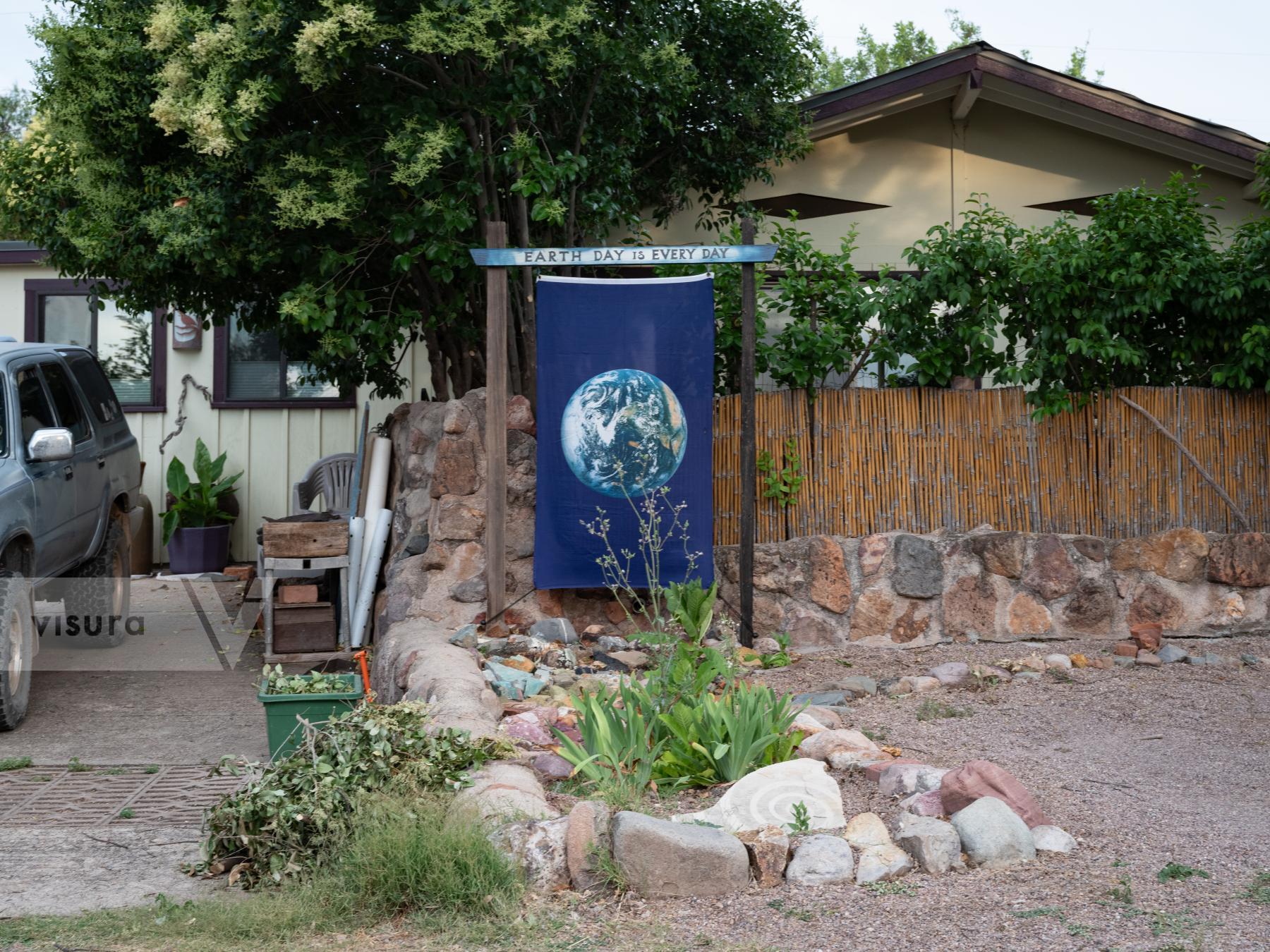
A flag outside Carolyn Shafer’s home in Patagonia, Arizona, seen on June 17, 2023, declares “Earth Day is Every Day.” Shafer is the Board President of Patagonia Area Resource Alliance (PARA), a citizen watchdog group founded in 2011, which works to protect the Patagonia Mountains and Sonoita Creek Watershed from the effects of industrialized mining.

The front page of the Patagonia Regional Times includes a story about the South32 Hermosa mining project in downtown Patagonia, AZ, on June 20, 2023.
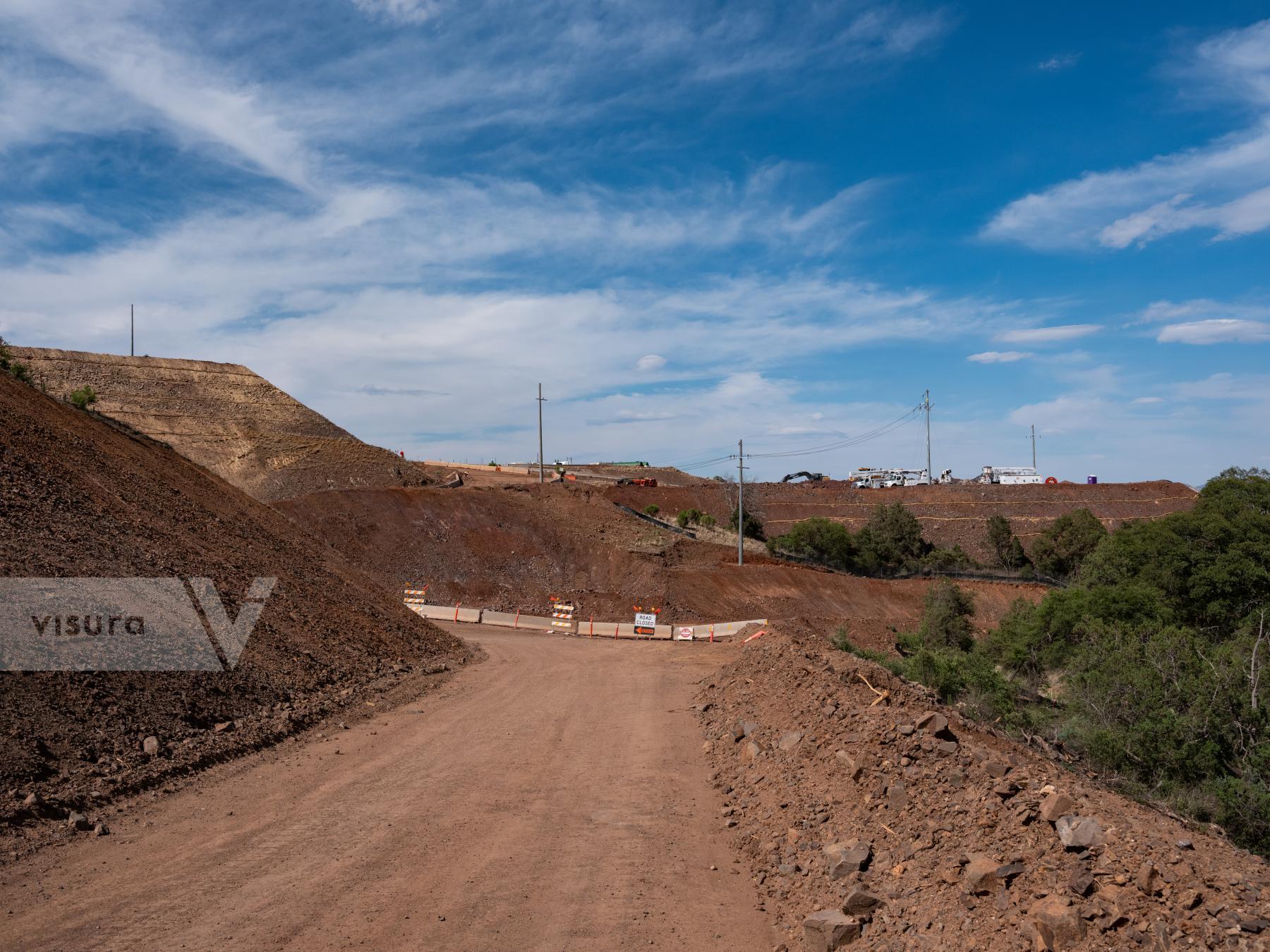
A dewatering and water treatment facility at South32 Hermosa mining project along Harshaw Creek in Patagonia, Arizona, seen on June 17, 2023. The plan for the South32 Hermosa mine, recently approved by the Biden administration under the FAST-41 expedited regulatory process, would dewater the Patagonia Mountains, removing massive amounts of groundwater, treating it, and dumping it into the Harshaw Creek. It is estimated that this small creek would be receiving 6.6 million gallons per day, likely leading to flooding of the area, while the mountains would be dried out, damaging the delicate ecosystem of endangered and threatened species that live there.

Harshaw Creek runs through Patagonia, Arizona, seen on June 17, 2023. The plan for the South32 Hermosa mine, recently approved by the Biden administration under the FAST-41 expedited regulatory process, would dewater the Patagonia Mountains, removing massive amounts of groundwater, treating it, and dumping it into the Harshaw Creek. It is estimated that this small creek would be receiving 6.6 million gallons per day, likely leading to flooding of the area, while the mountains would be dried out, damaging the delicate ecosystem of endangered and threatened species that live there.
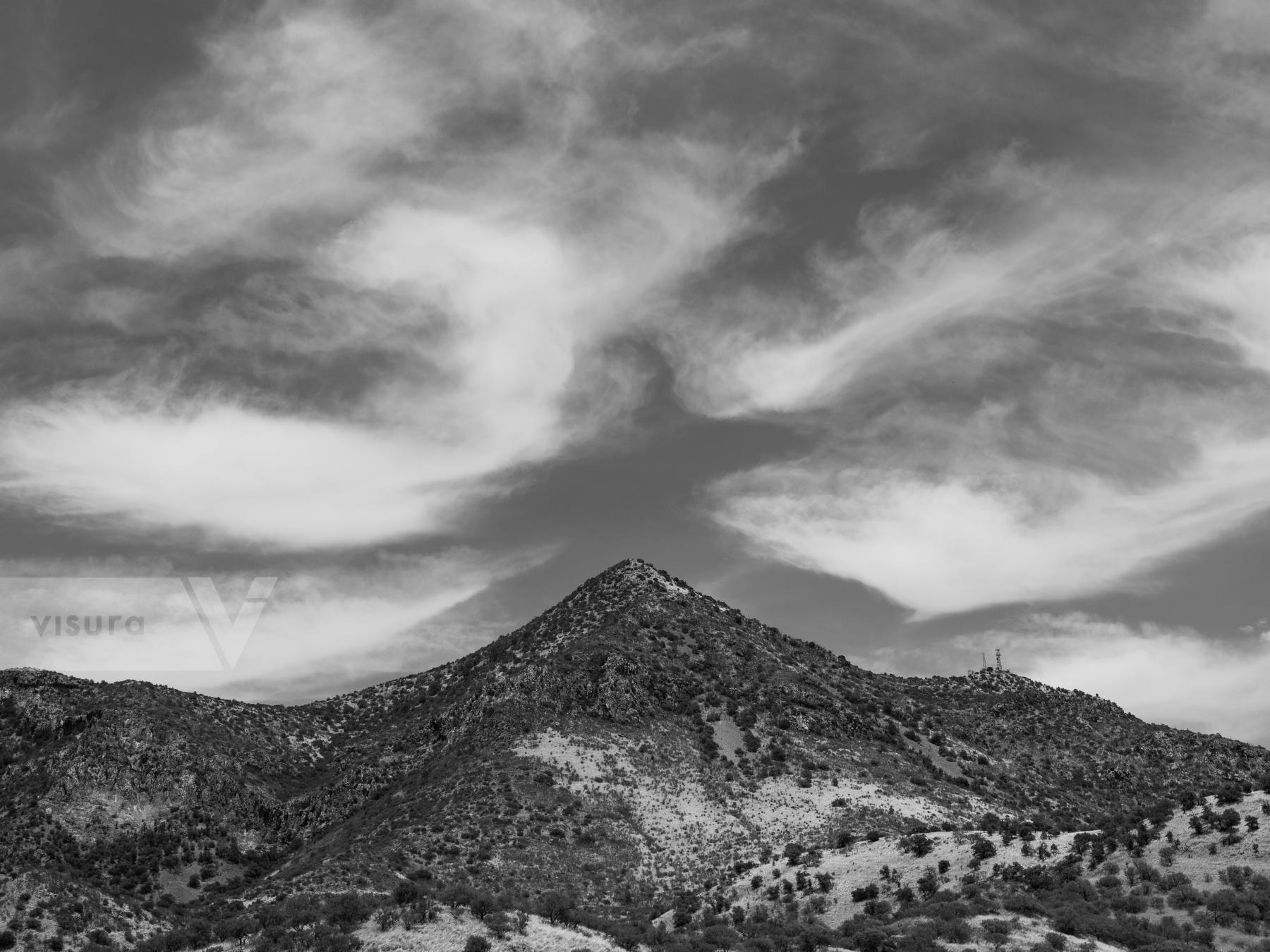
Red Mountain, along Flux Canyon Road in the Patagonia Mountains, seen on June 17, 2023. Patagonia, part of the Sky Islands in southeast Arizona, has the highest biodiversity in North America, including 112 endangered, threatened, or sensitive species, but it is also rich in minerals like manganese. This area is the planned location of the South32 Hermosa mine, which was the first project approved by the Biden administration under the FAST-41 expedited regulatory process for minerals deemed "critical" to the expansion of green energy technology.

Rock formations in Humboldt Canyon, in Arizona’s Patagonia Mountains, seen on June 17, 2023.
Patagonia, part of the Sky Islands in southeast Arizona, has the highest biodiversity in North America, including 112 endangered, threatened, or sensitive species, but it is also rich in minerals like manganese. This area is the planned location of the South32 Hermosa mine, which was the first project approved by the Biden administration under the FAST-41 expedited regulatory process for minerals deemed "critical" to the expansion of green energy technology.

Remnants of an historic mine shaft in Humboldt Canyon, in Arizona’s Patagonia Mountains, seen on June 17, 2023.
Patagonia, part of the Sky Islands in southeast Arizona, has the highest biodiversity in North America, including 112 endangered, threatened, or sensitive species, but it is also rich in minerals like manganese. This area is the planned location of the South32 Hermosa mine, which was the first project approved by the Biden administration under the FAST-41 expedited regulatory process for minerals deemed "critical" to the expansion of green energy technology.
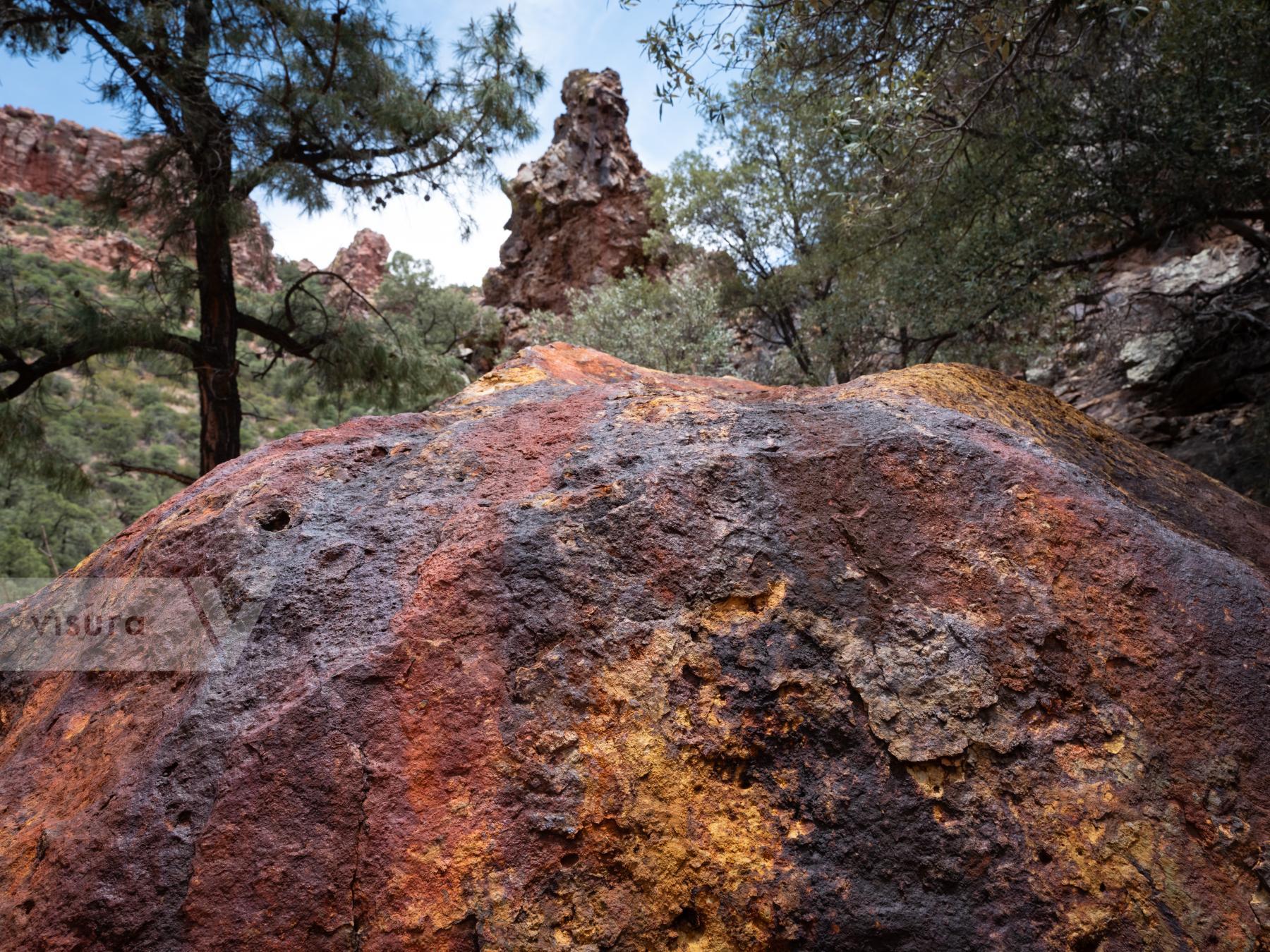
A highly mineralized rock in Humboldt Canyon in Arizona’s Patagonia Mountains, seen on June 17, 2023. It’s possible that the dark parts on the surface are manganese oxide, which was favored for petroglyphs by Indigenous peoples.
Patagonia, part of the Sky Islands in southeast Arizona, has the highest biodiversity in North America, including 112 endangered, threatened, or sensitive species, but it is also rich in minerals like manganese. This area is the planned location of the South32 Hermosa mine, which was the first project approved by the Biden administration under the FAST-41 expedited regulatory process for minerals deemed "critical" to the expansion of green energy technology.

View of the Patagonia Mountains in Patagonia, AZ, seen from the Borderlands Wildlife Preserve on June 20, 2023.

South32 mining company office in downtown Patagonia, AZ, on June 20, 2023.
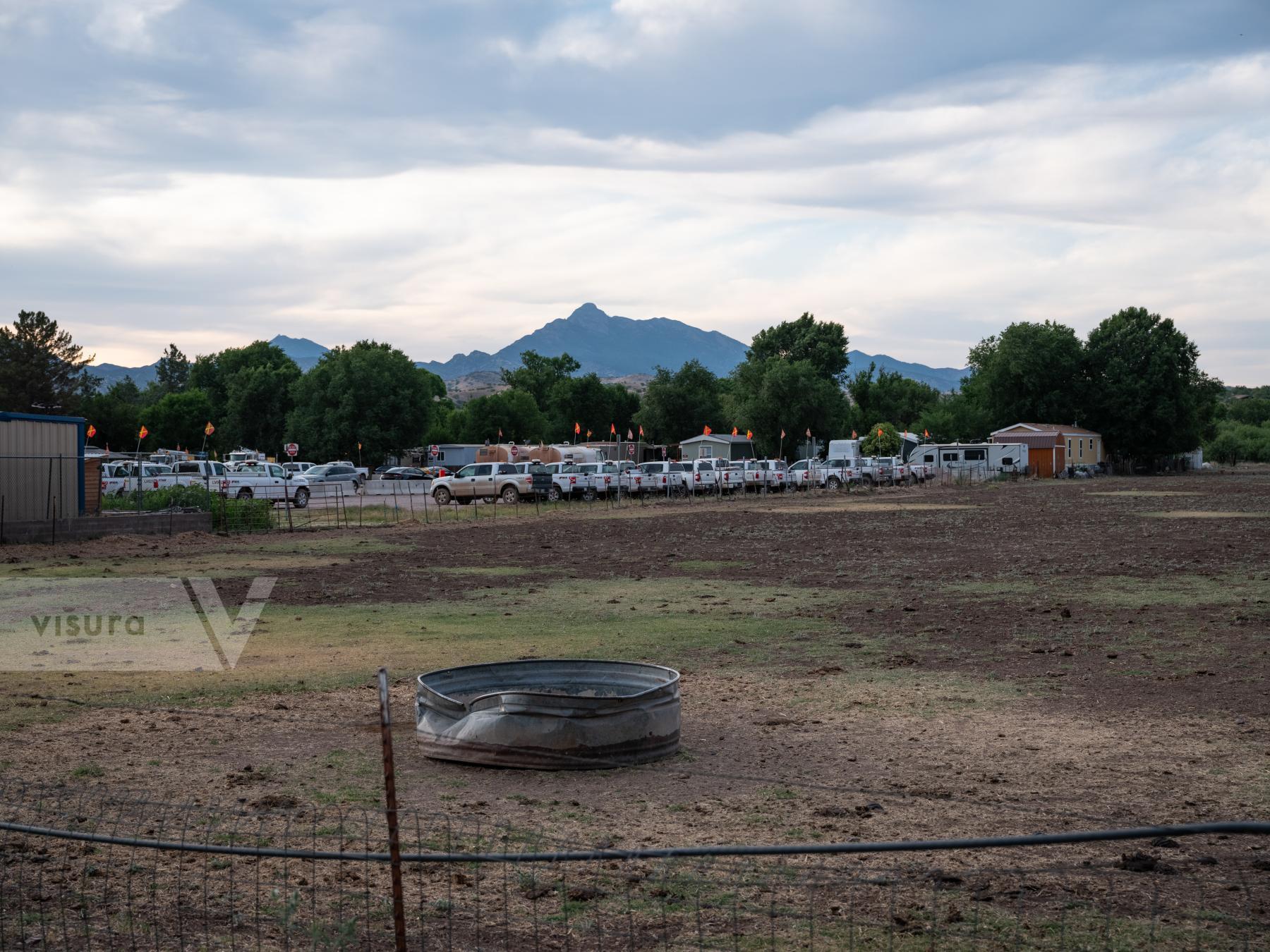
Mining trucks are parked in a lot in Patagonia, Arizona, on June 17, 2023.
Patagonia, part of the Sky Islands in southeast Arizona, has the highest biodiversity in North America, including 112 endangered, threatened, or sensitive species, but it is also rich in minerals like manganese. This area is the planned location of the South32 Hermosa mine, which was the first project approved by the Biden administration under the FAST-41 expedited regulatory process for minerals deemed "critical" to the expansion of green energy technology.

Hummingbirds visit blooming yucca plants at the Borderlands Wildlife Preserve in Patagonia, AZ on June 20, 2023.
Patagonia, part of the Sky Islands in southeast Arizona, has the highest biodiversity in North America, including 112 endangered, threatened, or sensitive species, but it is also rich in minerals like manganese. This area is the planned location of the South32 Hermosa mine, which was the first project approved by the Biden administration under the FAST-41 expedited regulatory process for minerals deemed "critical" to the expansion of green energy technology.

























